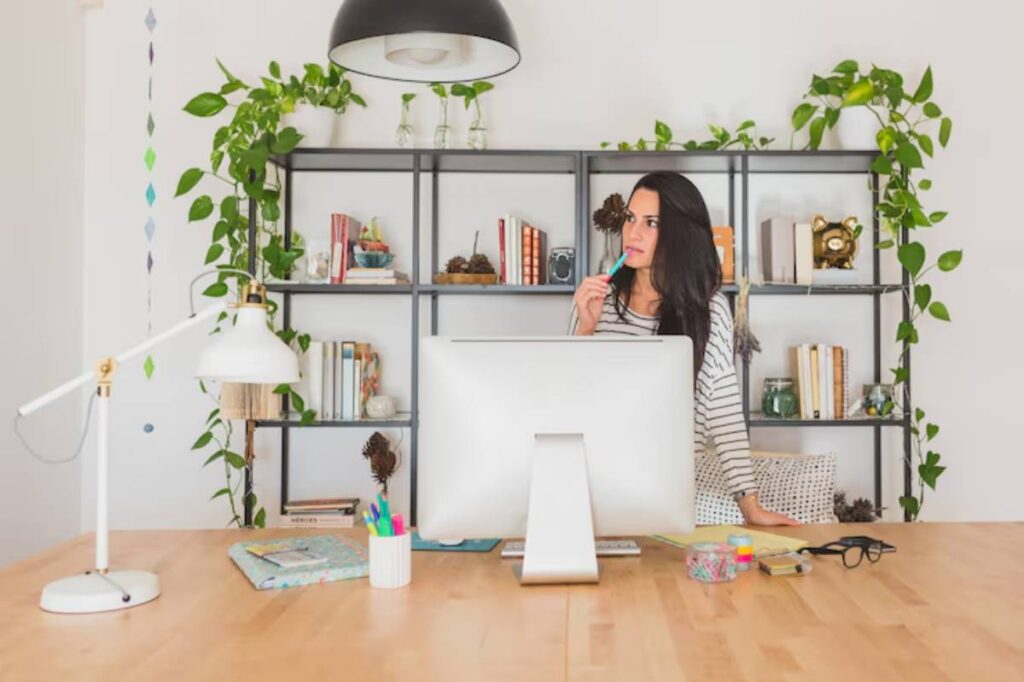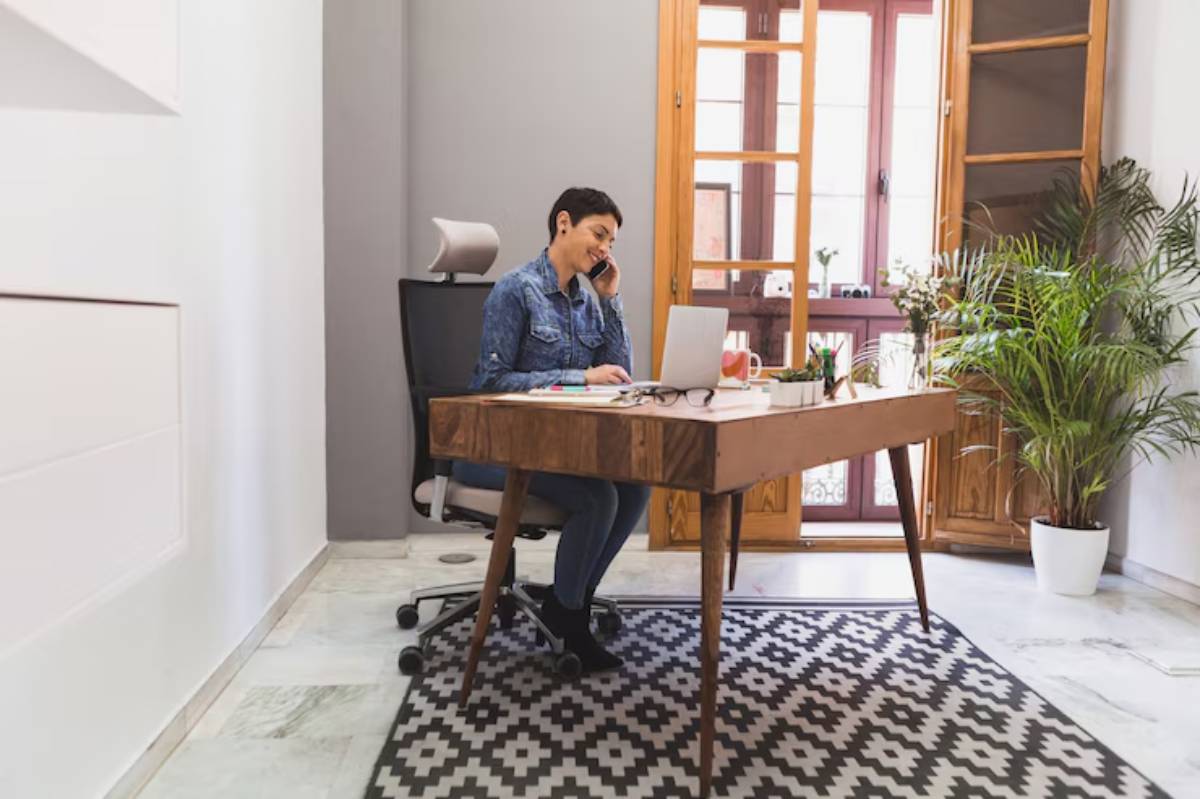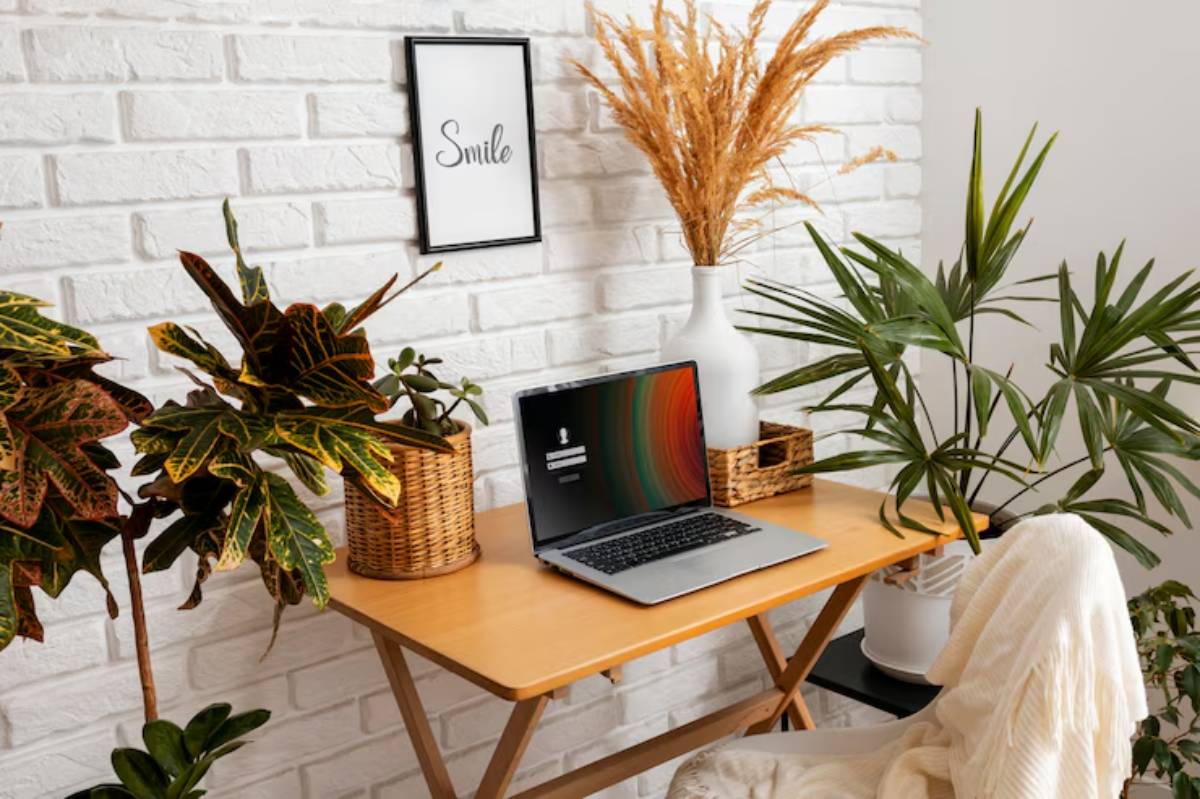The Health Blog

How to Create a Mental Health-Friendly Home Office
Imagine sitting at your desk and feeling… calm. Your back doesn’t ache, the light doesn’t glare in your eyes, and you can actually focus. That’s not just good design — that’s mental health support in action.
In today’s remote-first world, many of us are working from homes that weren’t built for it. Poor ergonomics, overwhelming clutter, and a lack of personal space can quietly chip away at your emotional well-being. Over time, it adds up to stress, anxiety, and even burnout.
Whether you’re setting up a home office for the first time or revamping an existing corner, this guide will help you create a workspace that fuels productivity and protects your mental health.
Understanding the Core: What Makes a Workspace Mental Health-Friendly?

Creating a mental health-friendly workspace means more than buying a good chair. It’s about setting up an environment that helps you feel safe, focused, and at ease.
When your surroundings support your emotional and physical needs, it’s easier to think clearly, stay productive, and feel good.
Why It Matters
Studies show that your physical environment can affect your mood and brain function. Poor lighting, clutter, and discomfort can increase stress. But when your space feels calm and comfortable, your brain stays more relaxed and focused.
One study from Cornell University found that improving ergonomics in a workspace significantly reduced pain and mental strain. That’s a big deal, especially when you’re spending hours in the same chair.
If you’re thinking about updating your setup, it’s worth reading our guide on setting up an ergonomic home workspace for more insights.
Pro Tip: Use noise-cancelling headphones or a white noise machine to block out household sounds.
Quick Guide: Mental Health-Friendly Office Essentials
- Choose the right location — Quiet, low-traffic areas reduce stress and distractions
- Invest in ergonomic furniture — Adjustable chairs, desks, and monitor stands prevent physical strain
- Use natural light and warm lighting — Bright spaces improve mood and alertness
- Incorporate nature — Plants and natural materials have calming effects
- Minimise clutter — Organised spaces support clear thinking
- Add personal touches — Familiar items foster emotional comfort
- Set up tech for ease — Clean cables and user-friendly setups reduce frustration
- Define work boundaries — Use physical cues to mentally “log off”
Important: Blue light filters can reduce eye strain during long screen hours — install them on all your devices.
Step-by-Step Guide: Designing Your Mental Health Workspace
1. Pick a peaceful location
Choose a room or corner that gives you a sense of separation from daily household life. A space with a door is ideal, but even a curtained-off nook can work wonders.
2. Position your desk for light and focus
Natural light boosts vitamin D and mood, but avoid glare on screens. Position your desk perpendicular to a window if possible. Use soft lighting when natural light is limited.
3. Choose ergonomic essentials
- Adjustable chair with lumbar support
- Desk at elbow height
- Monitor at eye level, about an arm’s length away
- Footrest if your feet don’t touch the floor
Pro Tip: Use a laptop riser or stack books to lift your screen. It’s a small change that can relieve neck and shoulder tension.
4. Add biophilic elements
Incorporate houseplants, wooden textures, or even nature-themed prints. These are proven to lower cortisol levels and improve focus.
Important: Choose low-maintenance plants like snake plant or pothos if you’re new to indoor gardening.
5. Control clutter
Use trays, baskets, or vertical shelving to create zones for work tools. Keep surfaces mostly clear to prevent visual overwhelm.
Warning: Cluttered desks are associated with increased anxiety and reduced processing speed — don’t let it build up.
6. Define boundaries physically and mentally
Even in small spaces, use room dividers, rugs, or lighting to mark the edge of your workspace. This helps your brain switch modes between work and rest.
Best Practices & Additional Insights
Stay in tune with your senses
What you hear, see, and feel matters. Use soft textures, warm colours, and calming sounds to signal safety to your nervous system.
Analogy: Your brain is like a control centre — clutter, noise, and discomfort overload the dashboard. A tidy, ergonomic setup clears the controls so you can actually fly.
Build habits around your workspace
- Open curtains and water your plant as part of your morning ritual
- Diffuse calming essential oils to signal “focus mode”
- Close your laptop and switch on ambient lighting at day’s end
These cues become psychological transitions, helping your brain wind up or down with ease.
Use case: Alex, a freelance designer, found their anxiety eased after adding a grounding mat, a low bookshelf, and a visual timer to their workspace. “It felt like the room was finally working with me, not against me,” they shared.
You might also find value in our article on the connection between physical and mental health in remote work, which explores how your body and mind are more linked than you might think.
FAQs
1. What are the key elements of a mental health-friendly workspace?
The essentials include ergonomic furniture, calming decor, good lighting, natural elements, and clear boundaries that support both focus and rest.
2. Can a small space still be mental health-friendly?
Absolutely. Even a desk in a quiet corner can become calming with the right lighting, noise control, and intentional setup.
3. What colours are best for a soothing workspace?
Soft blues, greens, and earthy neutrals tend to reduce stress and visual overstimulation.
4. How often should I reassess my setup?
Check your workspace every 3–6 months or after a major life change. Your needs evolve, and so should your setup.
5. Does a mental health workspace boost productivity, too?
Yes — studies show comfort and emotional safety improve both focus and performance. A supportive environment helps your brain stay engaged longer.
Create a Space That Works For You

A home office that protects your mental health is more than a luxury — it’s a necessity. When your space supports your body and mind, everything from focus to emotional resilience gets a boost.
This guide has shown you how to combine ergonomic function with emotional well-being, right where you work. You don’t need a major renovation — just small, intentional shifts.
Now it’s your turn: Take what you’ve learned and make one change today. Add a plant, adjust your screen, clear your desk — whatever gets you closer to balance.
Let your workspace become a place where productivity and peace can coexist.









